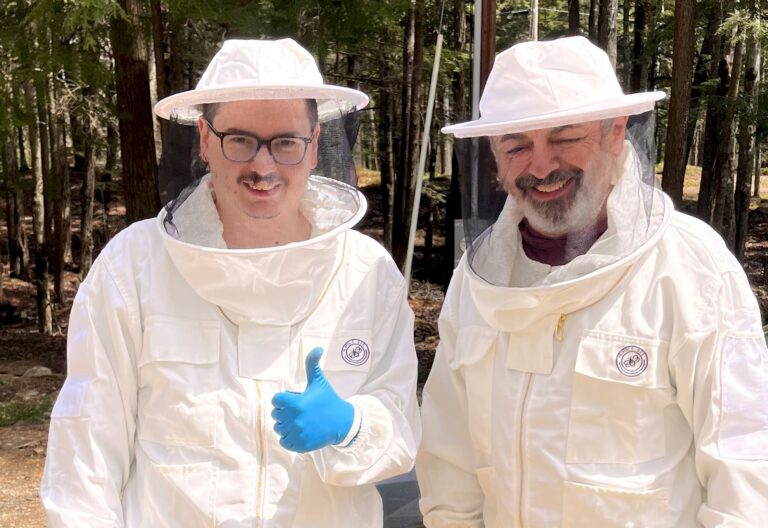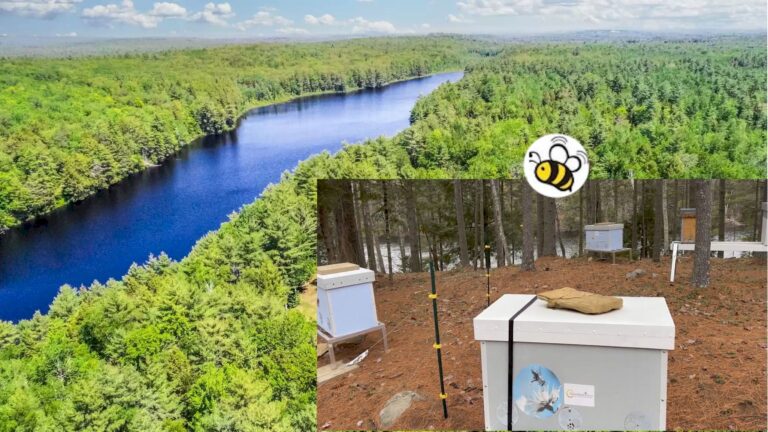

There are fewer and fewer unpolluted lands in the US that are far removed from agricultural and industrial pollution where the bees can freely forage in pristine forests and meadows uncontaminated with pesticides or herbicides. ForestBeehive natural beekeeping apiary was inspired by this beautiful unspoiled land adjacent to a wildlife sanctuary with its rich Spring-to-Fall nectar resources for our honeybees. Just as this land is unspoiled by chemical pollutants, we keep our honeybees unspoiled by any conventional chemical treatments or conventional sugar-feedings.
Difference between Organic Beekeeping, Treatment-Free Beekeeping and natural Beekeeping
In Organic Beekeeping, common synthetic honeybee treatments like pesticides, antibiotics are not allowed but organic-approved acids like oxalic acid, formic acid and essential oils are allowed.
Essentials oils and natural acids, however, disrupt the bees’ pheromone-based communiction and kill many beneficial micro-organisms in the hive and, in the case of acids, cause a dramatic shift in pH affecting the bees’ beneficial gut bacteria and health. See Study: Honeybees are negatively affected by essential oils.
Treatment-free Beekeeping is a widely used but often misunderstood term. Treatment-free does not actually mean hands-off beekeeping, it’s simply beekeeping without medicating the bees i.e. even organic-approved mite treatments are not used.
In Natural Beekeeping, just like in treatment-free beekeeping we do not medicate the bees in any way. No synthetic or organic poisons pollute our beehives and our honey products. Natural Beekeeping, however, is more bee-friendly as it adds to treatment-free beekeeping the following important elements that put the bees’ needs first:
Honey is harvested ONLY if there’s excess honey present. We make sure that the bees have enough of their own honey left and we never substitute their honey with sugar.
We practice beekeeping with minimal disturbances for the bees: in our singe-box Layens horizontal hives the tops of the Layens frames touch as the bees don’t have travel between boxes. When we open the Layens hive’s lid during inspections, etc. the bees are still inside and we almost never see disturbed bees flying around as is the case with conventional Langstroth vertical hives.
Although our honeybees have hundreds of acres of unpolluted woodlands to forage in, it is our task as beekeepers to provide the bees with the best possible housing and the best possible care. See our Fall tasks, Spring tasks and Summer tasks. As far as mite management is concerned, we use brood cycle interruption with a trapping comb as a single effective purely mechanical method of varroa mite management. Brood cycle interruption method mimics what naturally happens during swarming when for a while no brood is produced for mites to infect.
